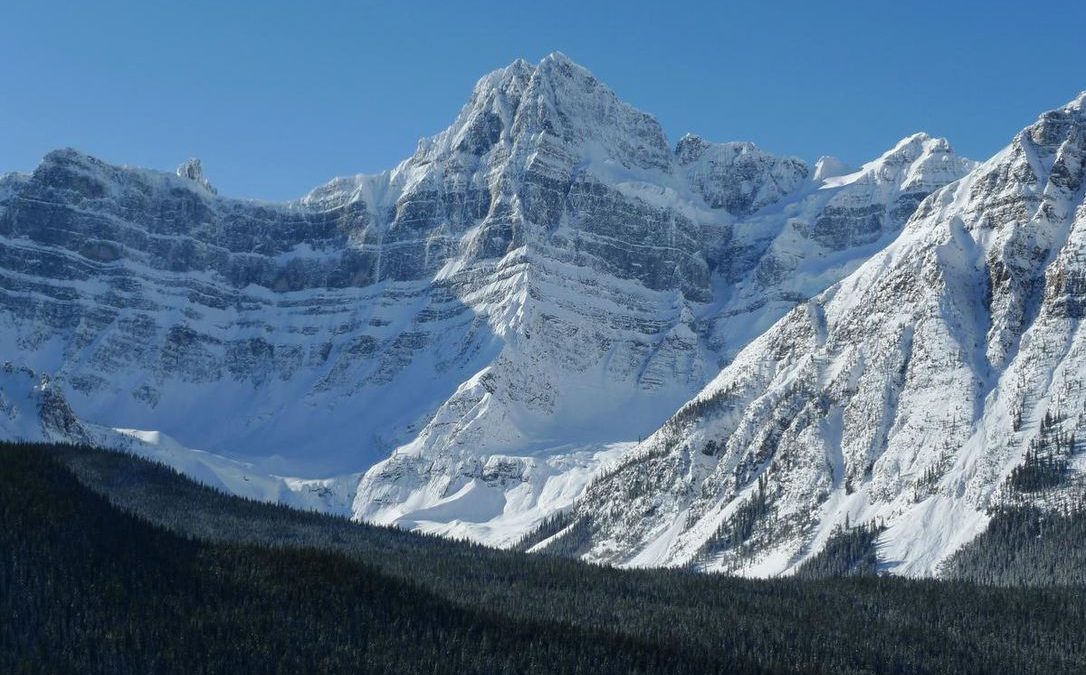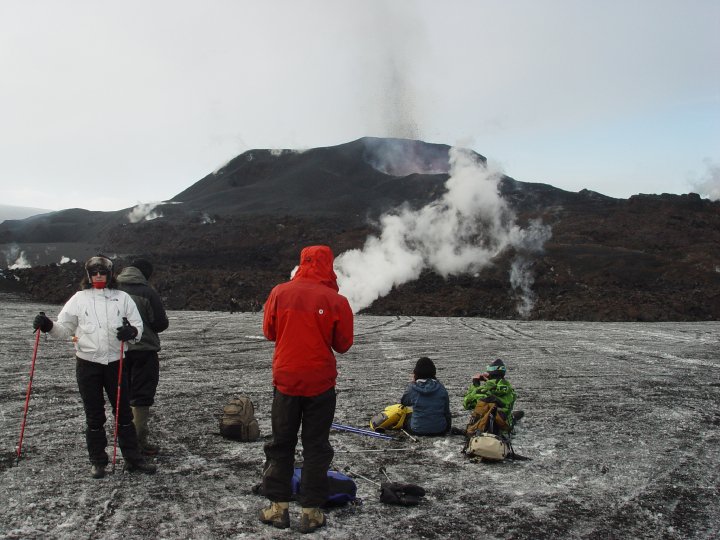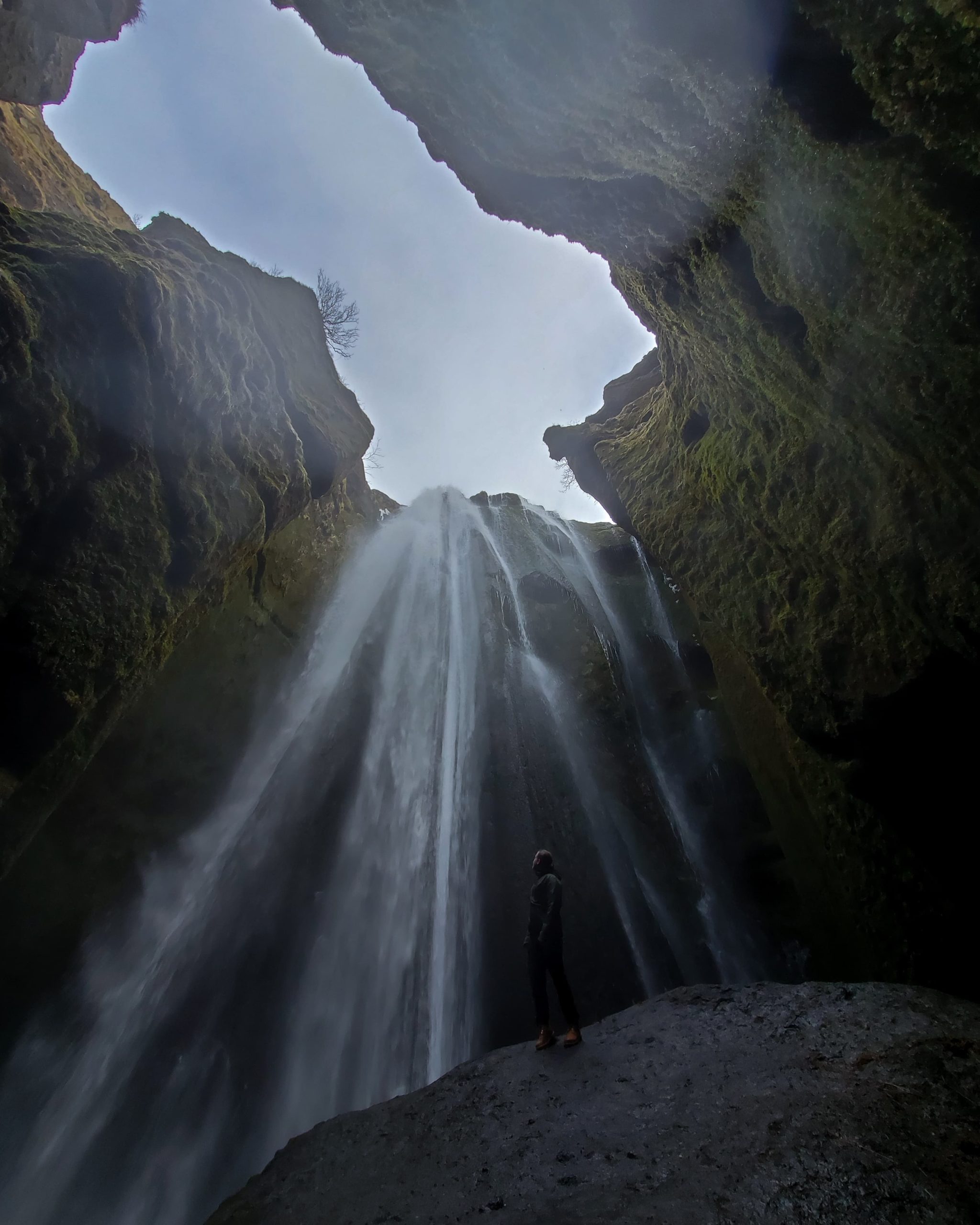
Howse Peak
Mountaineering is a demanding sport that comes with some serious risks. Throughout the history of people challenging themselves to reach a certain peak or even when experienced mountaineers go on an expedition that should be relatively simple for them many people have lost their lives in the mountains. Despite the risks involved many people choose to pursue the experience of standing on top of a challenging ascent and being able to overcome the challenges they may face on the way. Before reading the articles ‘Survivor’s Guilt in the Mountains’ and ‘Death at Howse Peak: How Three Climbers Perished on an Alberta Mountain’, I thought about the questions in front of me: Would you go into a relationship with someone who was a serious climber/adventurer?, if you had a son or daughter who was a serious climber what would you tell them?, and If you were a serous climber/adventurer and died while chasing your dreams and were somehow able to talk with your parents and/or boyfriend/girlfriend from the afterlife, what would you say? I thought of these as rather simple questions and thought that I would not hesitate to encourage my partner or my children in pursuing their dream of going on adventures and climbing mountains. If I were the one climbing, I would want my family to know that I passed away doing what I lived for and they should keep pursuing their own dreams despite me being gone.
Whilst reading through the articles, the way I saw things quickly changed. The authors, Nick Paumgarten and Marty Klinkenberg, both paint a vivid picture for the reader. ‘Survivor’s guilt in the mountains’ (Paumgarten, 2020) tells a story of Conrad Anker, a famous alpinist who has lost many of his friends and climbing partners in the mountains. The story describes how after one of Anker’s best friends, Alex Lowe, passed away in an avalanche, that Anker barely escaped from, he helped Lowe’s wife and kids to get through their loss. Anker and Jenni Lowe would later marry. It was not until 17 years later when they were able to recover Lowe’s body and get it cremated. In 2005 a peak close to Lowe’s hometown was renamed in his honor and in 2017, eighteen years to the day after Lowe’s passing, Anker, Jenni Lowe-Anker, and Lowe’s sons were able to scatter his ashes on top of Alex Lowe Peak.
Just two days later, a young man named Hayden Kennedy, whom Anker had known since he was a kid, lost his girlfriend, Inge Perkins, in an avalanche whilst skiing in a remote backcountry spot. Kennedy searched the area for hours but with no luck. Eventually he was forced to give up, ski out and drive home by himself. The feeling of loosing his girlfriend, on top of loosing a few of his friends in the year before, was too much for Kennedy who chose to end his life there. Prior to this incident, Anker had said to Kennedy in regards to loosing ones friends “You fall into this pit, right after. It’s totally dark. You think about taking your own life” (Paumgarten, 2020). However, Anker continues saying: “I hadn’t really talked to much about it before, because there was shame or weakness associated with it” (Paumgarten, 2020).
Anker, as a team captain of the North Face team, brought on a friend of his, Tim Tate, on to the team to consult members dealing with the loss of a friend or family member. Tate had helped both Anker and the Lowes through tough periods and deal with the survivor’s guilt that rose up following the death of a friend or a loved one. Many of the younger North Face athletes took it close when Kennedy and Perkins passed away. Some of the athletes were drawn to Tate’s presence, his way of speaking and his close relationship with Anker, and signed up for sessions with him. The loss of Kennedy and Perkins was not the only tragedy that members of the North Face team has had to deal with as in 2018 three members lost their life in an attempt to climb Howse Peak in April of 2019.
‘Death at Howse Peak: How Three Climbers Perished on an Alberta Mountain’ (Klinkenberg, 2019) retraces the final moments in the life of Jess Roskelley, Hansjörg Auer and David Lama and the impact it had on others. This starts with Quentin Roberts and Jasmin Fauteux whom had been hoping to climb a rugged peak along the Icefields Parkway in Banff National Park. Due to snowfall during the night, the pair decided not to attempt the climb and skied out and started driving back to Canmore. On the way back they caught a view of Howse Peak, which looked beautiful in the sun that had just come out. As they watched an avalanche was triggered and they watched as the mountain looked as if it was falling apart. When Roberts heard news the next day about three climbers that had gone missing, he got the feeling that the avalanche was related and contacted authorities. “I somehow got lucky, those guys didn’t” Robert says (Klinkenberg, 2019).
Early in the morning, day after the incident, Jess’ father, John Roskelly contacted the RCMP dispatch center in Alberta and reported that Jess nor his partners had checked in since the day before. At 11 am the same day a helicopter had arrived at Howse Peak to search for the climbers. The snow and limited visibility made the rescue attempt tough but at the bottom of the slope they saw a pile-up of snow and where able to make out a dark spot. The pilot was unable to land the helicopter but after a few passes over the downwash from the blades had exposed the toe of a boot. Due to the poor conditions they were unable to recover the body but saved the GPS co-ordinates in order to find them again. The next day the team flew back to the area only to discover that over night the biggest avalanche cycle of the season had occurred and that they were unable to land the helicopter in the area due to weather. They were able to land a half-kilometer away and watched avalanches come down every few seconds. After the third failed attempt they learned a new technique where searchers fly beneath the helicopter and probe in the snow while still attached. As they tried the new technique the searchers were called to another avalanche, but the skier was found with fatal injuries. As the team returned the next day, they brought with them a trained search and rescue dog, Brooke, to assist. Shortly before a decision was made to call off the search until the snow melted in the summer, Brooke began to dig in one spot indicating she had found something. Soon after the three bodies were found within a few meters of each other. The traumatic injury visible on Jess’ head was a indicator that they trio did not suffocate under the snow. “I knew he must have died instantly and had not suffered,” Joyce Roskelley, Jess’ mother, said. “It was comforting for me” (Klinkenberg, 2019)
After the incident John Roskelley visited the area three times and recovered the gear that had been lost. He found cameras and was able to reconstruct the path the trio used to get up Howse Peak. In July, John went there with Jordan, Jess’ sister. The pair was able to recover a coat, ropes, batteries, ski poles and parts of broken helmets. Even though John has been able to reconstruct a lot from the incident there is still a lot that is unknown. That is what Allison, Jess’ wife, struggles most with, how she imagines the accident and what must have been going through Jess’ mind. She still listens to old voicemails from Jess. She sometimes struggles to be at home because if feels empty without Jess. “She misses his flatulence, smile and silly jokes” (Klinkenberg, 2019).
Reading the two articles with the questions mentioned earlier in mind and attempting to imagine how it feels to be in those situations has made me think differently about my answers. I don’t believe I could be in a relationship with someone who was a serious climber/adventurer, at least not at the level described in the articles, although I would not stop my partner from trying if she suddenly felt the urge to start. If I had children who were this deep into climbing/adventures I would encourage them to be the best they could be, to put in the effort of doing everything right and try to teach them how to calculate the risk. I would not try to stop them from pursuing their dream. If I was in an accident, thought is still the same, I would want my family to know that I passed away doing what I lived for and they should keep pursuing their own dreams despite me being gone. However, I believe the chances of me trying these types of adventure has dropped drastically after reading these articles.
References
Klinkenberg, M. (2019, Nov 3). Death at Howse Peak: How Three Climbers Perished on an Albertan Mountain. Retrieved from The Globe and Mail: https://www.theglobeandmail.com/sports/article-death-at-howse-peak-how-three-climbers-perished-on-an-alberta/#comments
Paumgarten, N. (2020, feb 24). Survivor’s Guilt in the Mountains. Retrieved from The New Yotker: https://www.newyorker.com/magazine/2020/03/02/survivors-guilt-in-the-mountains

